Italians in France
Italian migration into what is today France has been going on, in different migrating cycles, for centuries, beginning in prehistoric times right to the modern age.[7][8] In addition, Corsica passed from the Republic of Genoa to France in 1768, and the county of Nice and Savoy from the Kingdom of Sardinia to France in 1860. According to Robin Cohen, "about 5 million French nationals are of Italian origin if their parentage is retraced over three generations".[7] According to official data of the Eurostat for 2012, the number of Italian citizens residing in France was 174,000.[4]
| Total population | |
|---|---|
| 4,000,000 (with Italian ancestry)[1] 422,087 (2019 Italian citizens) [2][3][4] 397,761 in 2016 (Other data of Italian citizens in France)[5][6] | |
| Regions with significant populations | |
| Paris, Lyon, Lille, Strasbourg, Lorraine, Southeastern France (Provence, Savoy, Corsica and Nice have autochthonous Italian populations), Southwestern France | |
| Languages | |
| French, Italian, other regional languages of France and Italy | |
| Religion | |
| Roman Catholicism |
History of Italians in France
Middle Ages and Renaissance
There has always been migration, since ancient times, between what is today Italy and France. This is especially true of the regions of northwestern Italy and southeastern France. As Italian wealth and influence grew during the Middle Ages, many Florentine, Genoese and Venetian traders, bankers and artisans settled, usually through family branches, throughout France. Regions of significant Italian diaspora sprang up as far north as Paris and Flanders. However it was not much as a percentage of the French global population.
This Italian migration developed more through the Renaissance, as previous generations became assimilated. Italian artists, writers and architects were called upon by the French monarchy and aristocrats, leading to a significant interchange of culture, but it was not a massive immigration of popular classes.
Since the 16th century, Florence and its citizens have long enjoyed a very close relationship with France.[9] In 1533, at the age of fourteen, Catherine de' Medici married Henry, the second son of King Francis I and Queen Claude of France. Under the gallicised version of her name, Catherine de Médici, she became Queen consort of France when Henry ascended to the throne in 1547. Later on, after Henry died, she became regent on behalf of her ten-year-old son King Charles IX and was granted sweeping powers. After Charles died in 1574, Catherine played a key role in the reign of her third son, Henry III.
Other notable examples of Italians that played a major role in the history of France include Cardinal Mazarin, born in Pescina was a cardinal, diplomat and politician, who served as the chief minister of France from 1642 until his death in 1661. Mazarin succeeded his mentor, Cardinal Richelieu, and extended France's political ambitions not only within Italy but towards England as well.
Enrico Tonti, born near Gaeta, Italy (1649/50 - 1704) was an Italian-born soldier, explorer, and fur trader in the service of France. He was the son of Lorenzo de Tonti, a financier and former governor of Gaeta. Enrico was second in command of the La Salle expedition on his descent of the Mississippi River. Tonti's letters and journals are valuable source materials on these explorations.
Enrico's brother, Pierre Alphonse de Tonti, or Alphonse de Tonty, Baron de Paludy (ca. 1659 – 10 November 1727)[1] was an officer who served under the French explorer Cadillac and helped establish the first European settlement at Detroit, Michigan, Fort Pontchartrain du Detroit on the Detroit River in 1701. Several months later, both Cadillac and Tonty brought their wives to the fort, making them the first European women to travel into the interior of North America. He was the son of Lorenzo de Tonti who was a financier and former governor of Gaeta. Lorenzo de Tonti was the inventor of the form of life insurance known as the tontine. Henri de Tonti, involved in LaSalle's exploration of the Mississippi River and the establishment of the first settlement in Arkansas, was his older brother.
Modern period
Napoleon Bonaparte, French emperor and general, was ethnically Italian of Corsican origin, whose family was of Genoese and Tuscan ancestry.[10]
Italian popular immigration to France only began in the late 18th century, really developed from the end of the 19th century until the World War I and became quite massive after this war. France needed workforce to compensate for the war losses and its very low birthrate. Initially, Italian immigration to modern France (late 18th to the early 20th century) came predominantly from northern Italy (Piedmont, Veneto), then from central Italy (Marche, Umbria), mostly to the bordering southeastern region of Provence.[7] It wasn't until after World War II that large numbers of immigrants from southern Italy immigrated to France, usually settling in industrialised areas of France, such as Lorraine, Paris and Lyon.[7]
Autochthonous populations
In both the County of Nice, parts of Savoy, "Italian" can refer to autochthonous speakers of Italian dialects (Ligurian and Piedmontese languages), natives in the region since before annexation to France, and also to descendants of Italians that migrated to the areas when they were part of Italian states. The number of inhabitants with Italian ancestry is generally indeterminable, and the use of French language is now ubiquitous. In addition, Corsica was a part of the Republic of Genoa until 1768 and many Corsicans speak along with French the Corsican language, closely related to the Tuscan dialect of Italian.[11]
Notable Italian French people
The list is organized chronologically, listing Italians in France by birth date periods
First half of the 19th century
- Bonaparte family
- Philippe Antoine d'Ornano (1784–1863), general and cousin of Napoleon Bonaparte
- Louis-Auguste Blanqui (1805–1881), politician.
- Henri Cernuschi (Enrico Cernuschi; 1821–1896), banker, journalist, and art collector (born in Milan). His collection is known as the Musée Cernuschi.
- Léon Gambetta (1838–1882), lawyer and politician (his father was from Genoa)
- Émile Zola (1840–1902), writer and politician (his father, Francesco Zolla, was born in Venice)
- Philippe Solari (1840–1906), artist
- Joseph Galliéni (1849–1916), French officer (father from Lombardy)
- Jean-François Raffaëlli, (1850–1924), artist
- Raoul Pugno (1852–1914), composer, pianist
- Pierre Savorgnan de Brazza (Pietro Paolo Savorgnan di Brazzà; 1852–1905), explorer (born at Castel Gandolfo, near Rome)
- Vincenzo Bellini (1801–1835), Italian-born opera composer
- Gioachino Rossini, (1792–1868) composer
Second half of the 19th century
- Clément Castelli (1870–1959), Italian-born painter (from Premia, Verbano-Cusio-Ossola region)
- Vincent Scotto (1874–1952), composer
- Ricciotto Canudo (1879–1923), Italian-born writer (from Gioia del Colle)
- Ettore Bugatti (1881–1947), Italian-born automobile designer and manufacturer (from Milan)
- Rembrandt (Annibale) Bugatti (1884–1916), Italian-born sculptor (from Milan)
- Amedeo Clemente Modigliani (1884–1920), Italian-born painter and sculptor (from Livorno)
- Henri Bosco (Fernand Marius Bosco) (1888–1976), novelist
- Michel Carlini (1889–1967), lawyer and politician
- Elsa Schiaparelli (1890–1973), Italian-born fashion designer (from Rome)
- Jean Giono (1895–1970), novelist (Italian ancestry)
- José Corti (José Corticchiato; 1895–1984), publisher
- Lazare Ponticelli (Lazzaro Ponticelli; 1897–2008), Italian-born veteran of the First World War (from Bettola, near Piacenza)
- Paul Belmondo (1898–1982), sculptor (born in Algiers of Italian ancestry)
- Cino Del Duca (1899–1967), Italian-born businessman, film producer and philanthropist (from Montedinove, Ascoli Piceno)
- Guillaume Apollinaire (1880–1918), poet, playwright, short story writer, novelist and art critic (born in Rome)
1900s
- Fernand Joseph Désiré Contandin dit Fernandel (1903–1971), actor and singer
- Stéphane Grappelli (Stefano Grappelli; 1908–1997), jazz violinist (his father was from Alatri, near Frosinone)
1910s
- Rina Ketty (Rina Pichetto; 1911–1996), Italian-born singer (from Sarzana)
- Marcel Bich (1914–1994), Italian-born manufacturer and co-founder of Bic (from Turin)
- Édith Piaf (Édith Giovanna Gassion; 1915–1963), singer (her mother, Line Marsa, born in Livorno, was of Italian-Berber descent)
- Achille Zavatta (1915–1993), clown
- Léo Ferré (1916–1993), Singer and songwriter
- Henri Betti (1917–2005) composer and pianist (his father is born in Savona and his grandfather is born in Parma).
- Claude Barma (1918–1992), director and screenwriter
1920s
- César Baldaccini (1921–1998), sculptor
- Georges Brassens (1921–1981), singer
- Émile Bongiorni (1921–1949), footballer
- Stellio Lorenzi (1921–1990), screenwriter
- Yves Montand (Ivo Livi) (1921–1991), actor and singer
- Roger Grava (1922–1949), footballer
- Serge Reggiani (1922–2004), singer
- Pierre Cardin (Pietro Cardin) (1922–2020), fashion designer
- François Cavanna (1923–2014), author
- Marcel Zanini (born 1923), jazz musician
- Armand Gatti (1924–2017), also known as Dante Savoir Gatti, poet, author, playwright, director, screenwriter, producer, journalist
- Michel Piccoli (1925–2020), actor
- Philippe Castelli (1926–2006), actor
- Marcel Azzola (1927–2019), accordionist
- Remo Forlani (1927–2009), writer and screenwriter
- Emmanuelle Riva (1927–2017), actress
- Albert Uderzo (1927–2020), comic author
- Daniel Filipacchi (born 1928), photographer, art collector and publisher
- Willy Rizzo (1928–2013), photographer and designer
- Luc Ferrari (1929–2005), composer
- Claude Nougaro (1929–2004), jazz singer and poet
1930s
- Bernard Stasi (1930–2011), politician
- Robert Enrico (1931–2001), film director
- Roger Piantoni (1931–2018), footballer
- Annie Fratellini (1932–1997), circus artist, clown, singer and film actress
- Francesca Solleville (born 1932), singer
- Paul Virilio (1932–2018), philosopher, cultural theorist and urbanist
- Max Gallo (1932–2017), writer, historian and politician
- Pierre Milza (1932–2018), historian
- Jean-Paul Belmondo (born 1933), actor
- Loris Azzaro, (1933–2003), fashion designer and perfumer, born in Tunisia to Sicilian parents.
- Dalida (Iolanda Cristina Gigliotti) (1933–1987), singer, actress and Miss Egypt 1954.
- Emanuel Ungaro (1933–2019), fashion designer
- Nino Ferrer (Nino Agostino Arturo Maria Ferrari) (1934–1998), singer
- Lucien Bianchi (1934–1969), racing driver
- Pia Colombo (Eliane Marie Amélie) (1934–1986), singer
- Claude Faraldo (1936–2008), actor, screenwriter and film director
- Bruno Gigliotti (Orlando) (born 1936), music producer
- Christiane Martel (born 1936), actress and Miss Universe 1953
- Eugène Saccomano (1936–2019), journalist, author
- Claude François (1939–1978), singer and songwriter
- Michèle Mercier (born 1939), actress
- Liliane Montevecchi (1932–2018), actress, dancer, and singer
1940s
- Raymond Forni (1941–2008), politician
- Catherine Tasca (born 1941), politician
- Edwige Fenech (born 1948), actor and film producer
- Jean-François Mattei (born 1943), doctor and politician
- Jean-Louis Bianco (born 1943), politician
- Pino Presti (born 1943), musician, composer and producer
- Luc Merenda (born 1943), actor
- Gérard Rinaldi (1943–2012), actor and singer
- Walter Spanghero (born 1943), rugby player
- Jean-Pierre Castaldi (born 1944), actor
- Nicole Grisoni, also known as Nicoletta (born 1944), singer
- Michel Gérard Joseph Colucci (Coluche) (1944–1986), humorist
- Daniel Bevilacqua (Christophe) (1945–2020), singer
- Jean-Claude Izzo (1945–2000), writer
- Patrick Modiano (born 1945), writer
- Richard Cocciante (Riccardo) (born 1946), singer
- Alice Donadel, also known as Alice Dona (born 1946), singer
- Hervé Forneri, also known as Dick Rivers (1946–2019), singer
- Hubert Falco (born 1947), politician
- Max Guazzini (born 1947), entrepreneur
- Daniel Russo (born 1948), film actor
- Henri Proglio (born 1949), manager
1950s
- Corinne Cléry (born 1950), actress
- Richard Galliano (born 1950), accordionist
- Gérard Schivardi (born 1950), politician
- Claude Bartolone (born 1951), politician
- Fabrice Luchini (born 1951), stage and film actor
- Marc Cerrone (born 1952), musician, composer and producer
- Jean-Marc Todeschini (born 1952), politician
- Francis Cabrel (born 1953), singer
- Patrick de Carolis (born 1953), TV presenter
- Angelo Parisi (born 1953), judoka
- Philippe Risoli (born 1953), television and radio presenter
- Christian Estrosi (born 1955), politician
- Michel Platini (born 1955), footballer
- Roger Amalfitano (born 1955), footballer
- Thierry Beccaro (born 1956), actor and TV presenter
- André Vallini (born 1956), politician
- Claude Onesta (born 1957), handball player
- Thierry Gilardi (1958–2008), stage actor and television presenter
- Jeannie Longo (born 1958), cyclist
- Thierry Mariani (born 1958), politician
1960s
- Gérard Onesta (born 1960), politician
- Catherine Malandrino (born 1963), fashion designer
- Stéphane Sanseverino (born 1961), singer
- Michel Petrucciani (1962–1999), jazz pianist
- Roberto Alagna (born 1963), tenor singer
- Nadine Morano (born 1963), politician
- Jean Alesi (born 1964), formula 1 driver
- Valeria Bruni-Tedeschi (born 1964), actress
- Christophe Neff (1964), geographer
- Eric Ciotti (born 1965), politician
- Jean-Marc Morandini (born 1965), journalist, radio, and TV host (Corsican father and Sardinian mother)
- Florent Emilio Siri (born 1965), film director and screenwriter
- Éric Cantona (born 1966), footballer
- Carla Bruni-Sarkozy (born 1967), actress
- David Ginola (born 1967), footballer
- Bruno Putzulu (born 1967), actor
- Bruno Caliciuri (born 1968), singer-songwriter
- Laurence Ferrari (born 1969), journalist and TV anchor
- Marianne James, singer, writer, actress
1970s
- Benjamin Castaldi (born 1970), television personality
- Marina Foïs (born 1970), actress
- Dominique Casagrande (born 1971), footballer
- Hélène Ségara (née Hélène Rizzo) (born 1971), singer
- Sylvie Testud (born 1971), actress, writer and film director
- Philippe Candeloro (born 1972), figure skater
- Chiara Mastroianni (born 1972), actress and singer
- Vincent Candela (born 1973), footballer
- Aurélie Filippetti (born 1973), novelist and politician
- Florence Foresti (born 1973), comedian and actress
- Elsa Lunghini (born 1973), singer and actress
- Alessandro Mercuri (born 1973), author and director
- Gilles Marini (born 1976), actor
- Alice Taglioni (born 1976), actress and model
- Veronica Maya (born 1977), television presenter
- Fanny Biascamano (born 1979), singer
1980s
- Seth Gueko (Nicolas Salvadori) (born 1980), rapper
- Benoît Pedretti (born 1980), footballer
- Roxane Mesquida (born 1981), actress and model
- Franck Signorino (born 1981), footballer
- Laëtitia Tonazzi (born 1981), footballer
- Jennifer (born 1982), singer and actress
- Vitaa (Charlotte Gonin) (born 1983), singer
- Mathieu Flamini (born 1984), footballer
- Pio Marmaï, (born 1984) actor
- Morgan Amalfitano (born 1985), footballer
- Élise Bussaglia (born 1985), footballer
- Anthony Scaramozzino (born 1985), singer
- Irene Curtoni (born 1985), ski racer
- Soko (singer) (born 1985), singer
- Charlotte Casiraghi (born 1986), princess of Monaco
- Frédéric Sammaritano (born 1986), footballer
- Vincent Muratori (born 1987), footballer
- Elisa Sednaoui (born 1987), model, actress, philanthropist and film director
- Yoann Maestri (born 1988), rugby union player
- Romain Alessandrini (born 1989), footballer
- Romain Amalfitano (born 1989), footballer
- Jules Bianchi (1989–2015), formula 1 driver
- Vincent Laurini (born 1989), footballer
- Benjamin Toniutti (born 1989), volleyball player
1990s
- Rémy Cabella (born 1990), footballer
- Xavier Chiocci (born 1990), rugby player
- Sébastien Corchia (born 1990), footballer
- Alexy Bosetti (born 1993), footballer
- Nabilla Benattia (born 1992), model and TV personality
- Paul Nardi (born 1994), footballer
- Yoan Cardinale (born 1994), footballer
- Enzo Crivelli (born 1995), footballer
- Sandie Toletti (born 1995), footballer
- Fiona Ferro (born 1997), tennis player
- Lorenzo Callegari (born 1998), footballer
- Nicolas Cozza (born 1999), footballer
Gallery
See also
References
- "Italiani Nel Mondo : Diaspora italiana in cifre" (PDF). Web.archive.org. Archived from the original (PDF) on February 27, 2008. Retrieved 2015-09-27.
- "Rapporto Italiano Nel Mondo 2019 : Diaspora italiana in cifre" (PDF). Web.archive.org. Retrieved 2019-01-01.
- "Présentation de l'Italie". www.diplomatie.gouv.fr. Retrieved 1 January 2020.
- Amy Sedghi. "Europe: where do people live?". the Guardian. Retrieved 24 September 2015.
- "Rapporto Italiani nel Mondo 2016". www.banchedati.chiesacattolica.it. Retrieved 1 January 2021.
- Polchi, Vladimiro. "Gli italiani continuano a emigrare un milione in fuga negli ultimi 4 anni". www.repubblica.it. Retrieved 1 January 2021.
- Cohen, Robin (1995). The Cambridge Survey of World Migration. Cambridge: Cambridge University Press. p. 143. ISBN 9780521444057.
- (in French) Histoire de l'Italie à Paris. Italieaparis.net. Retrieved on 2011-07-04.
- Project MUSE – Renaissance Quarterly – Savonarola in Francia: Circolazione di un'eredità politico-religiosa nell'Europa del Cinquecento (review). Muse.jhu.edu. Retrieved on 2011-07-04.
- "Napoleon I (emperor of France) – Britannica Online Encyclopedia". Britannica.com. Retrieved 2010-09-02.
- "Eurolang report on Corsican". Archived from the original on 2009-02-23. Retrieved 2008-06-13.
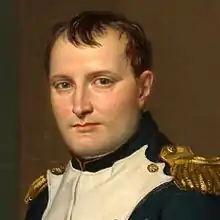
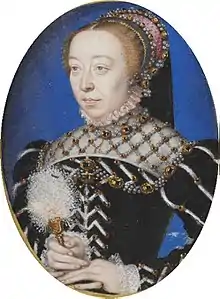
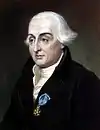

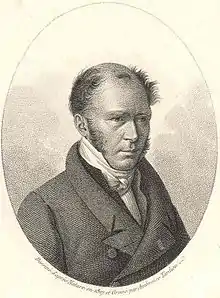

.jpg.webp)


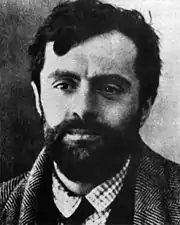



.jpg.webp)
.jpg.webp)













_24_(cropped).jpg.webp)


_(48199369072).jpg.webp)